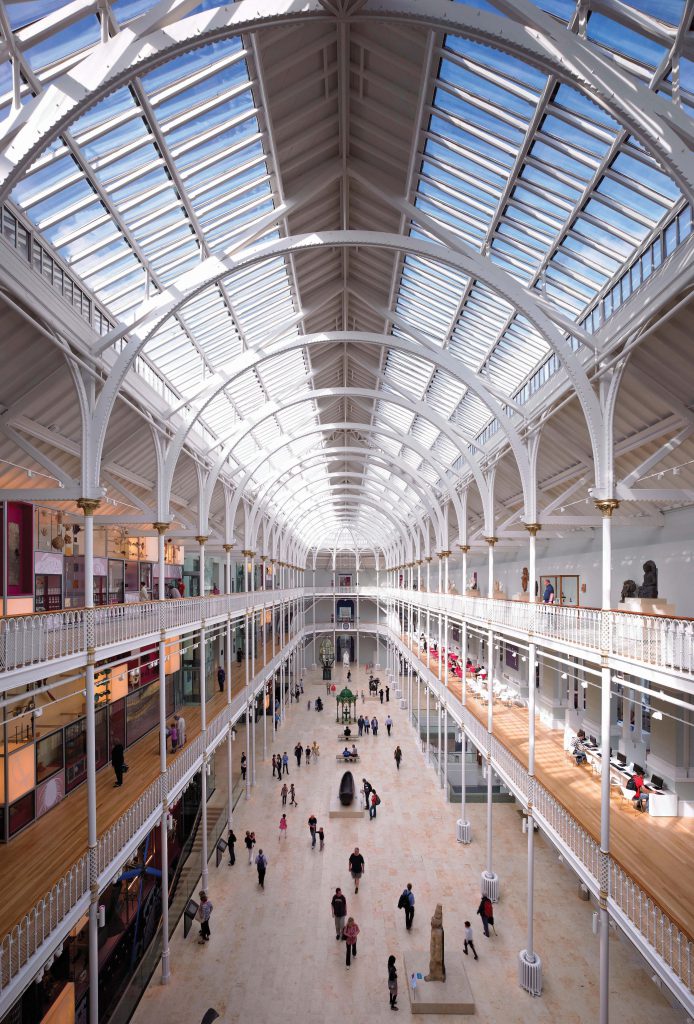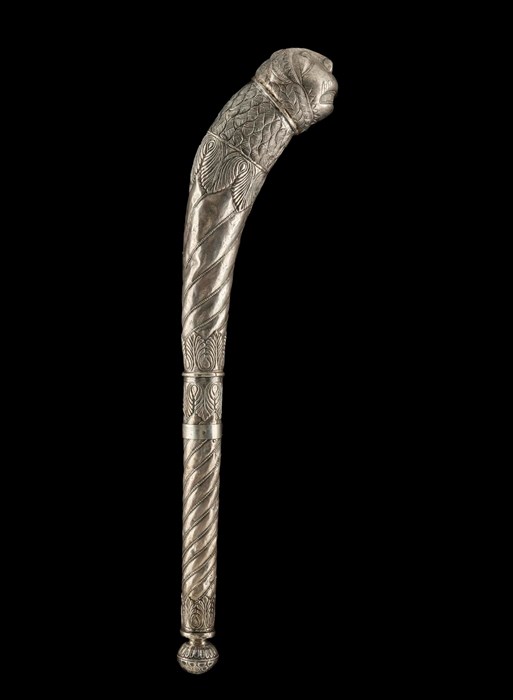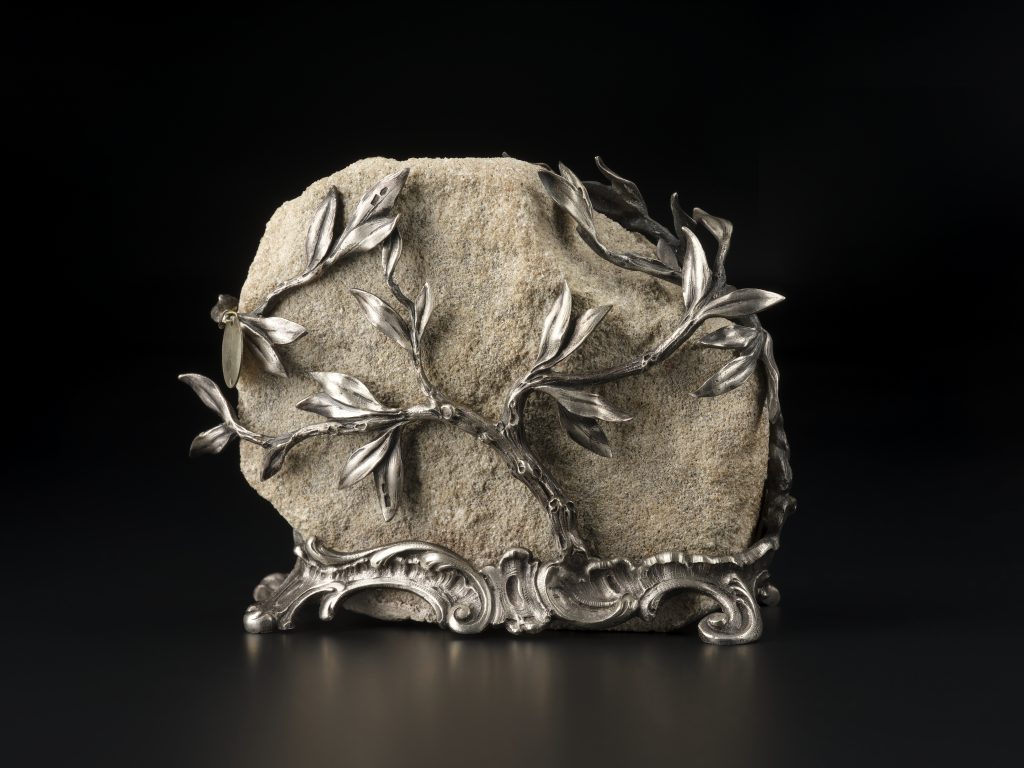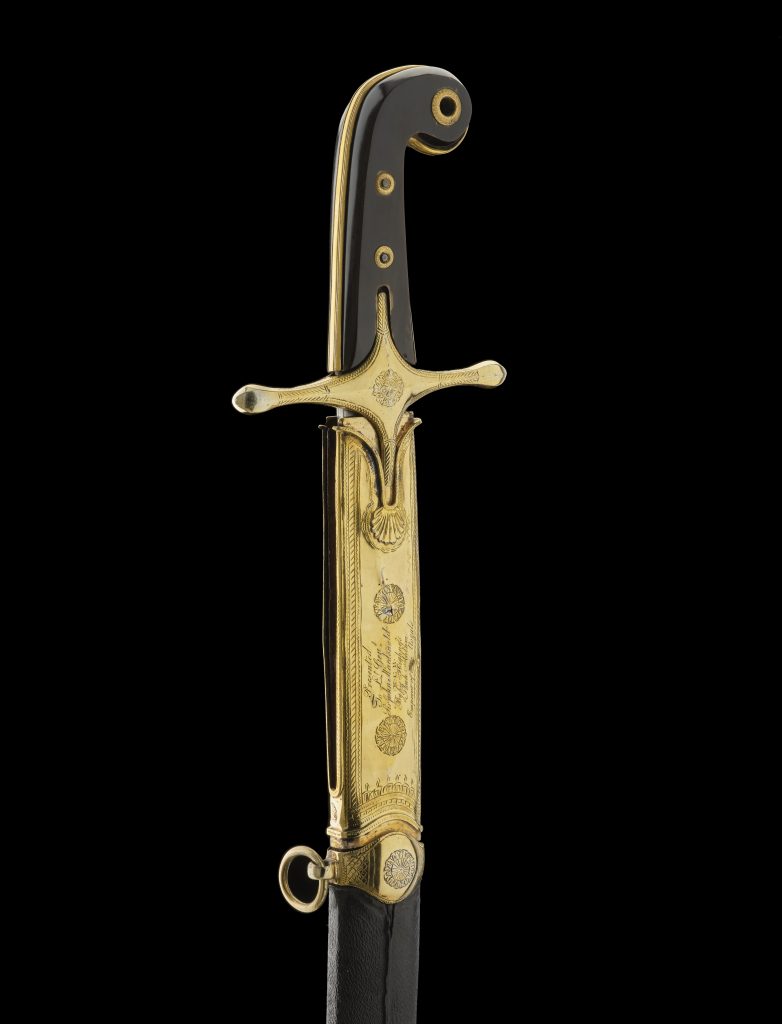In February this year I was lucky enough to take a trip to India with colleagues from my former institution, the National Galleries of Scotland, my last international visit before lockdown. There was one moment when we stood with our host curators in the grand hall of the Dr Bhau Daji Lad Mumbai City Museum which continues to haunt me ten months later. The building, formerly known as the Victoria and Albert Museum Bombay, is now celebrated as a visionary institution, engaging the city in the appreciation of Mumbai’s rich artistic, social and economic history and promoting cross cultural understanding in a country riven by religious divisions. For any visitor from Scotland or the UK it is also a site whose very structure evokes colonial era ghosts.

Whilst its programme of highly political contemporary art make the Bhau Daji Lad a twenty first century experience, its architectural fabric and permanent displays are rooted in the 1850s and 60s and the country’s history of colonisation by the British. The ground floor showcases European artefacts from the Great Exhibitions, chosen as models for Indian manufacturers to copy (undermining indigenous crafts and industry in the process). Upstairs, ethnographical objects, including early twentieth century scale models of the castes of India, suggest the controlling systems of Imperialism through which life on the subcontinent was ordered for decades.

But it is the strangely familiar architectural plan of the building that has most impact, especially for anyone familiar with the Grand Gallery of the National Museum of Scotland in Edinburgh. Its columns, pallisades and sweeping staircases transport the British model of museum culture to India’s megacity, pulling the visitor back a century and a half. George Birdwood, the Edinburgh educated colonial administrator worked with Dr Bhau Daji Lad on the concept design from 1857, which was approved in London before the corner stone was laid and the iron parts shipped from Britain in 1862.
It was also in 1857 that Captain Frances Fowke of the Royal Engineer Corps commenced work on the design of the iron framed building that would become the Victoria & Albert Museum in London’s South Kensington, before drawing up the plans of the building which opened in 1866 in Edinburgh as the Edinburgh Museum of Science and Art under the Directorship of George Wilson. If you stand in the Grand Gallery today you stand in a space that connects nineteenth-century Bombay with the institutions of Empire in London, home of the East India Company, Edinburgh, and Scotland, all through Fowkes’s practical solution to the display of ‘progress and knowledge’ in the modern museum.
Colonial histories and their legacies have again become a central concern for our museums and all others since the summer of lockdown. The killing of George Floyd in Minneapolis in June led to a global upswelling of support around the Black Lives Matter movement in response to which many cultural institutions, including ours, made statements of support and empathy on social media. This traumatic moment brought into focus important debates on de-colonisation that have been transforming museum programmes and displays over the preceding years and has forced us to re-evaluate our function, values and meaning in rapidly changing times. We have come to realise that our collections and approach to interpretation, like those of many of our peers, have been shaped by historical traditions and colonial policies that were based on racial or racist understanding of the world.

Through discussion in recent months colleagues at National Museums Scotland and our partners have re-affirmed support for anti-racism and committed to bring to light new knowledge, providing the evidence that helps our visitors reflect on past and present injustices and future hopes in an informed manner. The work we are currently undertaking to re-address our interpretation and presentation of Scotland’s relationship with Empire in our Discoveries Gallery at the National Museum of Scotland is one example of that, as is our ‘Legacies of Empire‘ display at the National War Museum which opens this month and builds on an Arts and Humanities Research Council funded project ‘Baggage and Belonging‘ to fully understand the ways that military concepts of ‘loot’, ‘plunder’, ‘booty taking’, diplomatic ‘gifting’, ‘memorialisation’ and ‘specimen collecting’ have underpinned not just the formation and content of military collections, but also of museum culture more generally. The related project book authored by our Keeper of Scottish History and Archaeology Stuart Allan and Dr Henrietta Lidchi, Chief Curator at the National Museum of World Culture in the Netherlands, provides a much needed examination of these contested terms.

We also need to consult with and learn from those communities for whom our objects have special relevance and ensure that museums like ours provide a platform for debate to promote understandings of the multiple and divergent roots of racial injustice through reference to the material culture and heritage currently in our care. This will help us build trust, gain respect for collaborative work that challenges historic and contemporary mis-representations, and value the research and dialogue that should sit at the core of the work all museums accept as their role and function in society.

In 1857 as Bombay’s iron museum of colonial power took shape as a design, George Wilson, first Director of the Industrial Museum of Scotland (precursor to the Edinburgh Museum of Science and Art) imagined a very similar building (dependent on the very same offices of colonial planning) in Edinburgh, one whose trace still remains as you stand beneath its soaring and light filled arches. He famously wrote: ‘The museum which I have been commending to you is not a museum of Scottish Industry, but a museum of the world in relation to Scotland. It cannot be less than this… to no one nation has been given the monopoly of genius, construction skill or practical sagacity.’ It is a material reminder to all of Scotland’s part in the colonial story and a call to consider the humility and care we will need for the connecting conversations yet to happen in its spaces.
